Autumn is well underway now and it’s one of my favourite times of the year to amble around the roads and streets close to home in Rhos on Sea, which thanks to gardeners over many decades, are graced with a rich and varied collection of species of trees and shrubs worthy of any arboretum. Ignited into fiery autumnal colours, many, although not all of the most colourful specimens hail from far-distant corners of the world; but whatever their origins, all are united in presenting a spectacular natural firework display.
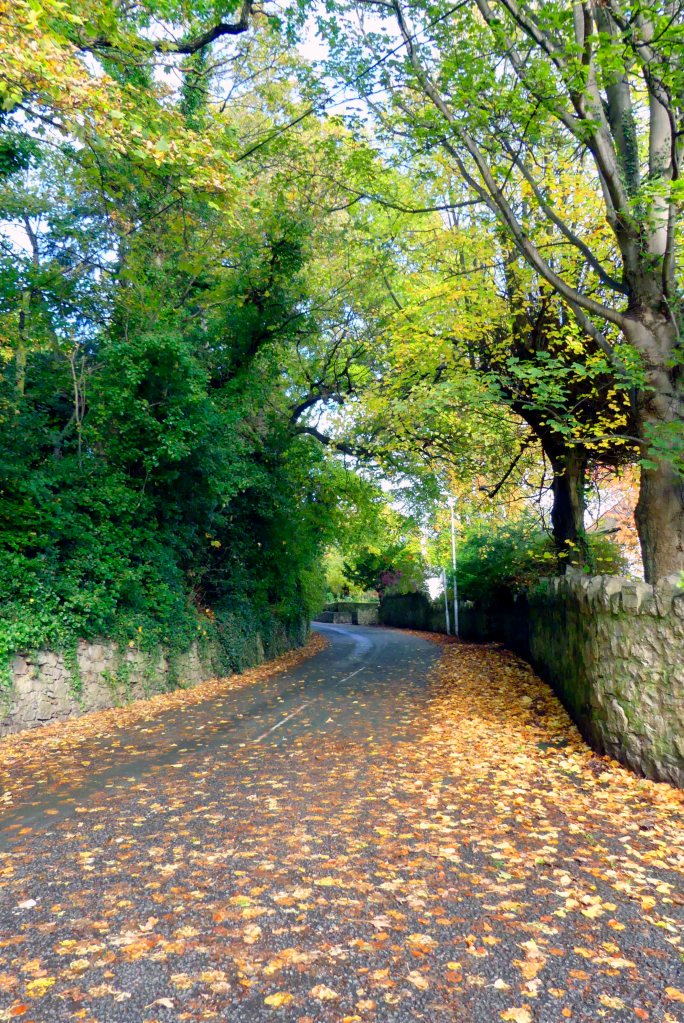

Stars of ivy berries burst forth from the depths of dark evergreen leaves. As yet the berries of most plants are small and green, it will be a while before they’ll be ripe enough to feed hungry birds. Surprisingly wasps are still active. Constant streams of them were zooming in and out of this nest in a wall, hidden behind the thick vines of an old ivy plant.

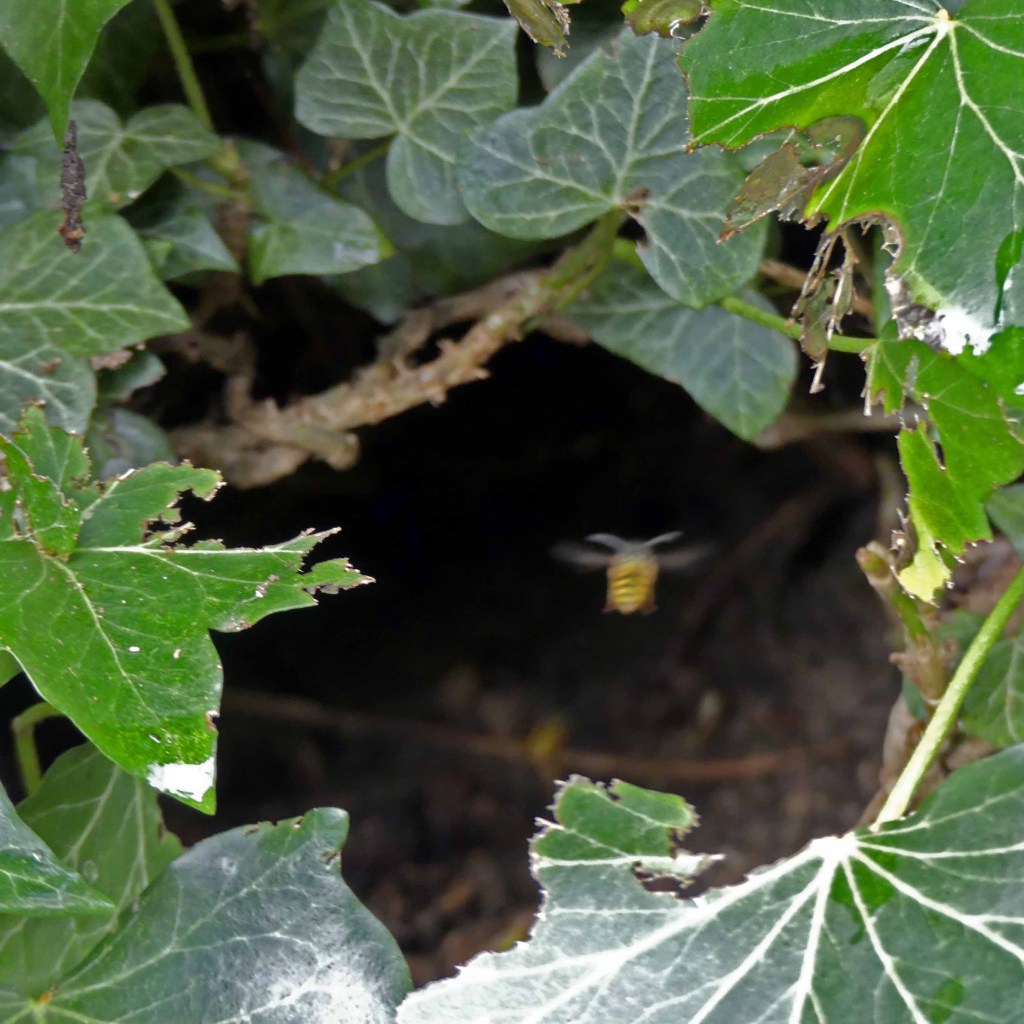
There are several big old copper beech trees on my trail, this one, close to the edge of a garden, overhanging its boundary and the pavement is a lovely shape, has dense foliage and is beautiful all year round.

A pathway, dark and shady for much of the year is temporarily illuminated by the bright golden leaves of Japanese maples planted along either side.
Further along, a Cappadocian maple rebels against the tight constraints of a neatly kept front garden, strewing its leaves with abandon onto the tightly-clipped hedge that confines it and the pavement below.

The woodland of Bryn Euryn, which is largely made up of native trees, provides a dark background against which the more ‘exotic’ ones in the gardens along this road are shown off to great advantage.

Between the larger trees are hedges and shrubs full of jewel-bright berries, it seems to be a particularly good year for holly, but no doubt most of them will have been eaten by Christmas.


A variant of the Cappadocian maple, this tree has leaves that show shades of pink in autumn
and nearby, this Norway maple displays shades varying from dark red-purple to shades of orange and gold.

A week or so ago, before being blasted by high winds, this huge red oak tree was covered with leaves. The red oak has beautiful big leaves which do turn dark red in its native habitats of eastern North America, but here in the UK they more often go a warm bronze-brown.
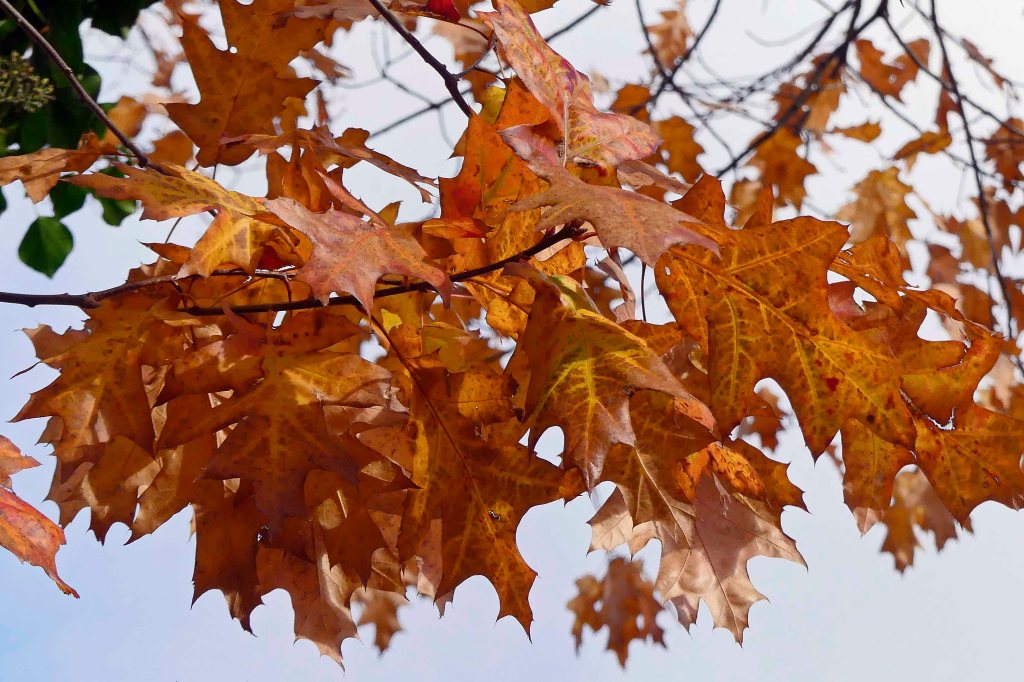

In the gutter below the oak, some of its fallen leaves have gathered with others of copper beech, silver birch and a solitary still-shiny chestnut. The conker is from a red horse chestnut close by which only ever seems to produce a few flowerheads each year, few of which manage to develop into fruits. Hunting along the gutter I found a fallen leaf from it and the husk for the conker. The leaves are similar to those of the horse chestnut, but have a more crumpled appearance and are slightly glossy. The husks are more oval in shape and have few, if any, spines.

From a distance a nearby horse chestnut, which was quite severely pruned last winter, looks to have turned nicely golden. However, a closer look at the leaves shows that as with all other horse chestnuts in our area, it is afflicted with an infestation of ‘leaf blotch’, caused by the horse chestnut leaf miner, (part of the life cycle of the moth Cameraria ohridella), which causes patches on the leaves to go brown in July and early August. Bad infestations cause the leaves to become dry, brittle and brown and eventually they will curl and drop off early. Whilst not looking pretty, it doesn’t kill the trees, although it is thought that over time it may weaken trees and make them more vulnerable to other diseases.
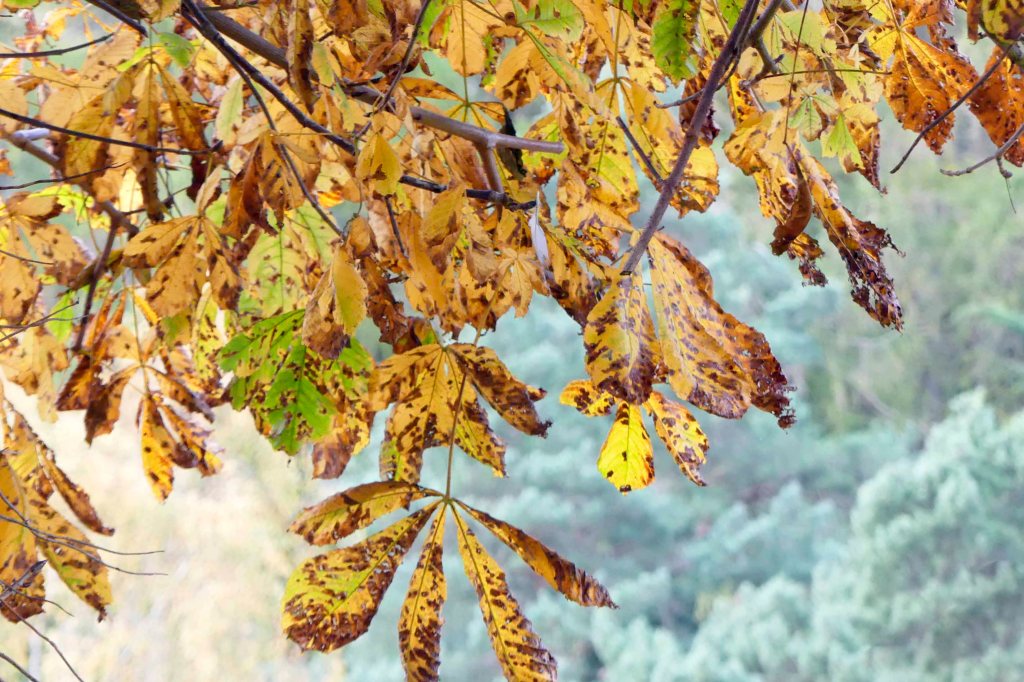
A small flock of Jackdaws had been flying around restlessly, calling noisily to one another, for much of the time I was out, then settled for a while in the tops of some silver birches.

In a narrow roadside garden there are two rowan trees. One is a the common species, which has red berries, while the other has a more unusual crop of yellow berries. I find it fascinating that every single last red berry was long ago eaten by birds, but the heavy crop of yellow ones has not been touched.
In the same garden the lovely scarlet red flowers of the Japanese quince Chaenomeles japonica have developed into fruits. Although mainly grown as an ornamental, it seems a shame that these fruits are never picked and used. Although not in the same league as the much larger edible quince, Cydonia oblonga, they can be cooked and eaten and if used for nothing else, they are deliciously fragrant when placed in a bowl in a warm room.
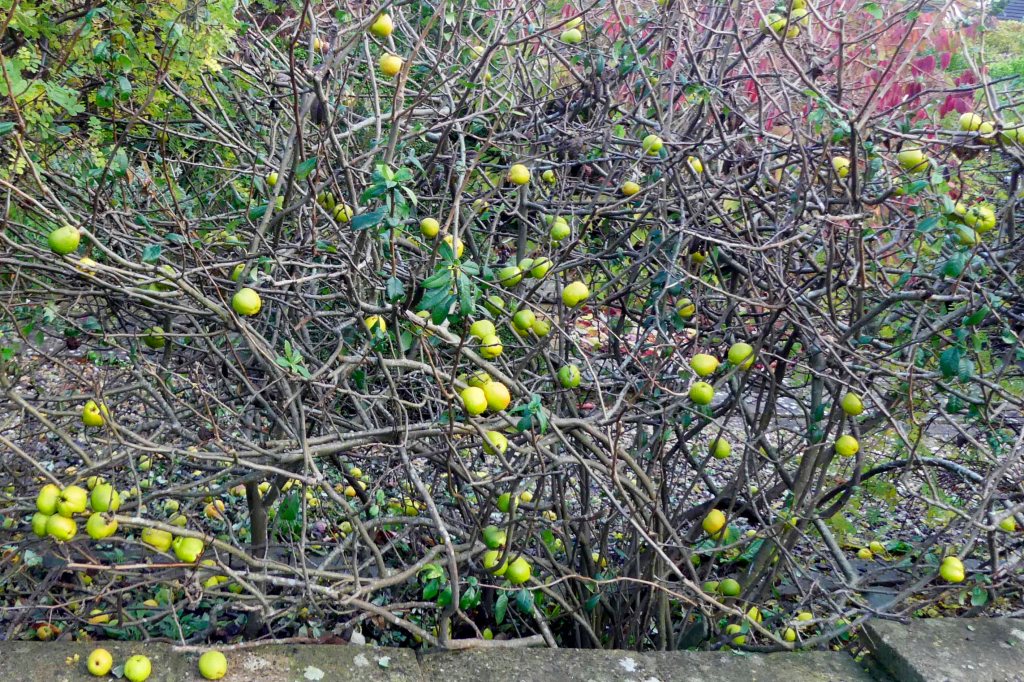

Bearing a profusion of dark pink blossoms in the spring, this Japanese cherry tree is now vibrant with all shades of yellows, oranges and reds. Although its double flowers are not good for our pollinators, there’s no disputing it’s a beautiful tree.
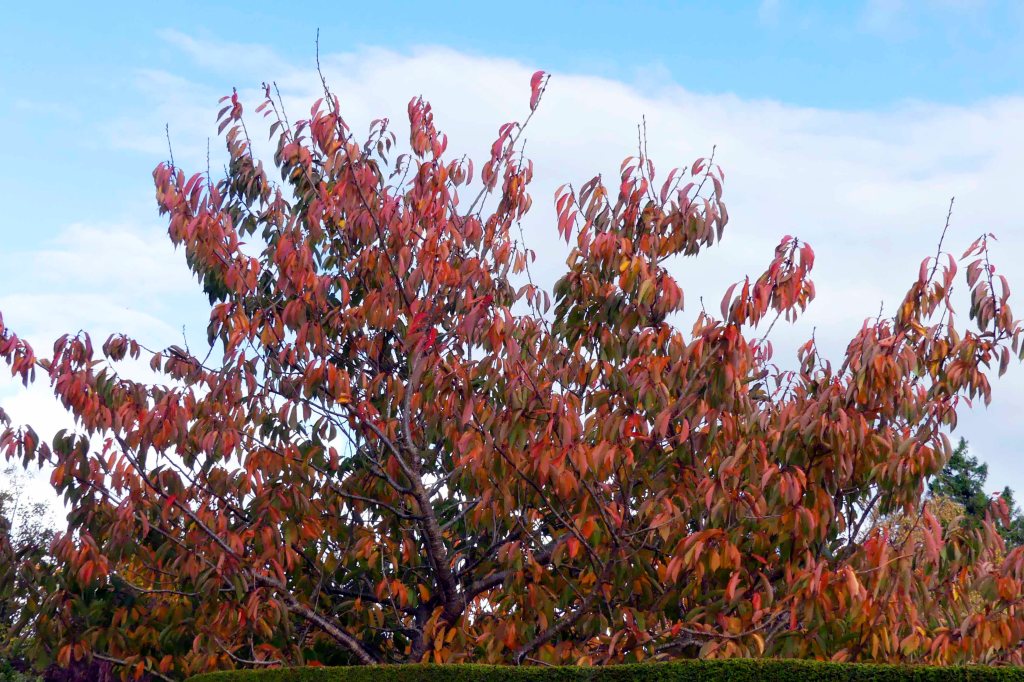

There are still flowers blooming and some, such as hydrangeas and the ice plant will stay colourful for some time after their flowers have finished.


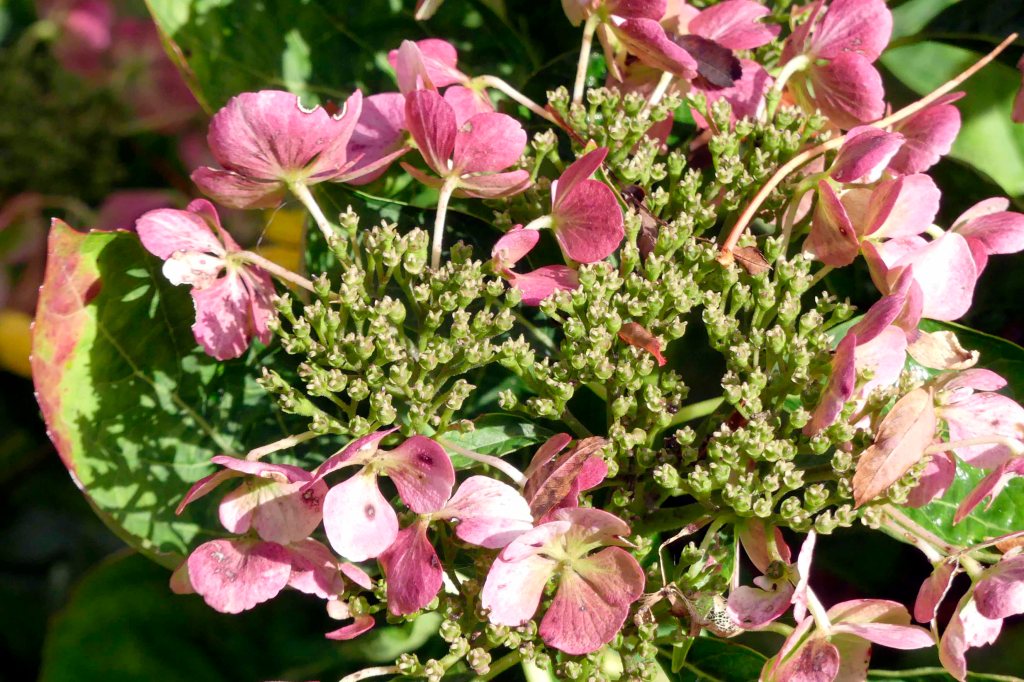
Ever-graceful, silver birches are lovely all year, but clothed in their softly golden autumnal yellow they glowed against today’s blue sky and here lent perfect contrast to the dark red of the cherry plums beside them.
To finish, I have to mention two shrubs, both once valued and sought-after as prized ornamentals, but both great escapers and now so commonly found in the wild they are included in many wildflower ID guides. Along my route there are a good few self-sown plants of both of these species, both bearing very different fruits. The first is the Snowberry Symphoricarpos albus, with its unmistakable white berries

and the other is the Himalayan honeysuckle Leycesteria formosa, which I think has some of the most lucious-looking fruits of all garden plants.










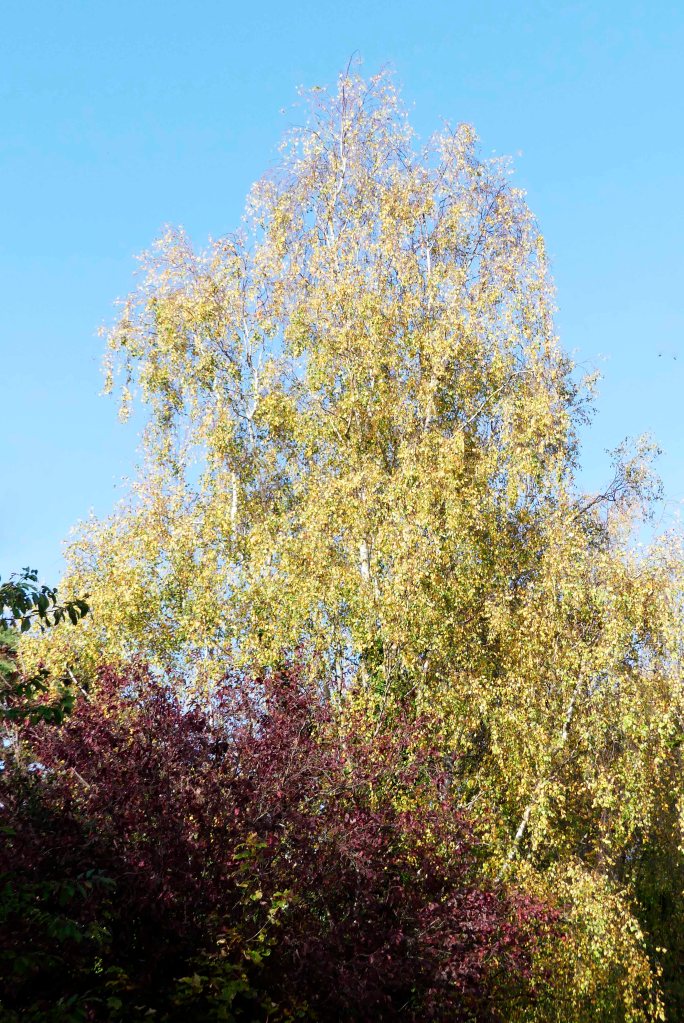
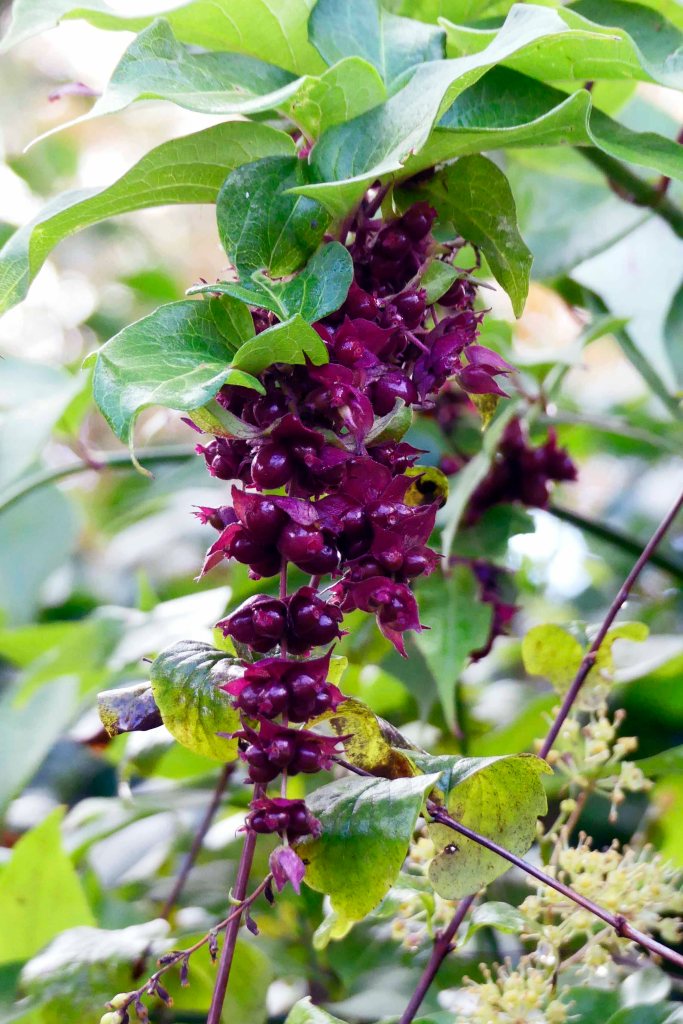
💫🔔🎊 ▫️ H a p p y ▫️ N e w ▫️ Y e a r ▫️ 🎊🔔💫
🪬🍀✨🎊🪄💫✨🌟✌️💛✌️🌟✨💫🪄✨🎊🍀🪬
LikeLike